The Spiritual Dynamics of PrayerWhere Does Prayer Come From? Rabbi Mike Comins 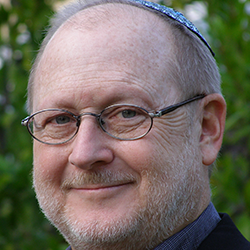 In my experience, and in observing others, discussions about prayer gravitate almost immediately to speculation about God. Does God exist? Does God "answer" prayer? Lately, I haven't been thinking about the great mystery to Whom I pray. I've been thinking about where I pray from. The former never gave good results, because thinking about God is often abstract and speculative. But thinking about the source of prayer within me has been fruitful, not because I remove God from the equation or take a narcissistic approach. Rather, I find that thinking about God does not connect me to God. But dwelling on the spiritual dynamics of prayer - focusing on how to create "God-moments" rather than dissecting "God-ideas" - helps to connect me to God on a regular basis. I start a prayer session with two deliberate moves. First, instead of jumping into prayer, I drop into my body. I close my eyes and breathe deeply, taking a bath in my own awareness. Where do I feel tense and agitated? I breathe into points of tension. Sometimes I discover that I already feel calm and relaxed. But usually it takes some time to get there. I try to get out of my own way, by letting go of my neurotic, thinking mind, so that I can listen to the stirrings of my heart without judgment or control. I try to create the space for truths to emerge that are usually covered by the busy routines of my life. Then I'm ready for step two: finding kavvanah by gathering my focus and setting an intention. I listen to my heart. What state is it in? I might get an idea of what I need, and set my intention to fill that need in the course of the prayers I'm about to pray. Sometimes I'm agitated, and I know I need peace. Here I am drawn to personal, spontaneous prayer, where I might express my frustrations and explore the causes of whatever is causing the agitation. Sometimes I'm sad, and I know that I need to attend to it. I don't set the intention of "don't worry, be happy." Occasionally, that may be the best response, but until I listen to why I'm sad, I don't know. Usually, it is more important for me to give my sadness space rather than to try to force it into something else. Sometimes I'm tired, and just need to unwind and get a reprieve from the tensions of work. I look for relaxation and uplift. I pray to feel the embrace of God. Sometimes I'm feeling good, and want to share it with prayers of praise and gratitude. Then I am likely to jump right into the liturgy, which excels in this area. And then I set a second intention: to leave my intention behind, and pray. My stated intention lingers in the background. In the foreground, I aspire to be a blank slate. (Sometimes I feel like a blank state to begin with, empty, not needing or wanting.) I want to let God and the siddur take me wherever we might go. My goal is to drop any expectations of what is supposed to happen and remain alert for what actually does happen. What insight might be triggered by a word of personal prayer or a line in the liturgy? I keep awareness on my body to see what feelings might be revealed. By understanding as best as possible where I am and where I need to be, I bring greater concentration and focus to my prayer. I address God with clarity, even when the address is nothing more than, here I am. More important, my prayer has already been answered. Open, receptive, and alert, I am feeling loved, called, and connected. I am in God's presence. Anything more is frosting on the cake. And if God does send something specific my way, in this state of heightened awareness, I just might hear it. © Copyright by Rabbi Mike Comins. You are welcome to reprint this article in your local newspaper, email list, Temple Bulletin or other communication if the following is appended: "This article is provided by the Making Prayer Real eJournal at RabbiMikeComins.com, where you will find outstanding resources on Jewish prayer."
0 Comments
The Spiritual Dynamics of Prayerby Rabbi Natan Margalit Ph.D. 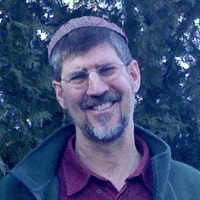 One of the most important innovations of the Hasidim concerns distracting thoughts (mahshavot zarot) that come to mind when praying. Rather than trying to chase them away, one should “raise the sparks” by delving deeply into the distracting thought. This idea goes straight back to the founder of Hasidism, the Baal Shem Tov (founder of Hasidism, Rabbi Israel ben Eliezer, d. 1760), and there are some wonderful ways he expressed it. One of my favorites is his understanding of the Talmudic passage in TB Brakhot 33b: MISHNAH. IF ONE [IN PRAYING] SAYS ‘MAY THY MERCIES EXTEND TO A BIRD'S NEST’, ‘BE THY NAME MENTIONED FOR WELL-DOING’, OR ‘WE GIVE THANKS, WE GIVE THANKS’, HE IS SILENCED. . . Gemara. … R. Zera said: To say ‘Shema, Shema’, is like saying ‘We give thanks, we give thanks’. . . Said R. Papa to Abaye: But perhaps [he does this because] at first he was not attending to what he said and the second time he does attend? — He replied: Can one behave familiarly with Heaven? If he did not recite with attention at first, we hit him with a smith's hammer until he does attend. Let's briefly unpack this Mishnah and its Gemara commentary. It seems likely that the Mishnah was concerned with dualistic ideas current at the time that limited God to only the good. One should not talk about God’s mercies for the mother bird, because it implies that God only acts with compassion. Rather, we shouldn’t leave God out of troubling events. “Be Thy name mentioned for well doing” similarly can be taken to imply well doing, but not everything else. “We give thanks, We give thanks” can be taken as addressed to two Divine beings, one in charge of the good events and one in charge of all the rest. However, in the Talmud’s commentary, Abaye’s answer to Rav Papa goes in another direction, and seems to imply that the problem with saying the Shema twice is not dualism, but being too familiar with God. It is not proper to stutter and repeat oneself in addressing God. Once is all the chance you get in the royal court of the Divine. The Baal Shem Tov, in his Amud HaTefillah (Sefer Baal Shem Tov, Vol. 1, pg. 151- 155), brings this Talmud text powerfully back to the question of God’s presence in all things. He raises an objection to Abaye’s answer, saying,
I find this practically useful in prayer. When I drift off during prayer, I am sometimes tempted to go back and do it again. But I also have another choice: I can look for a minute at my day dream and see if it is, in fact, a subject calling for my deep attention.
The Komarno Rebbe (Rabbi Yitzchak Eisik Yehuda Yechiel Safrin of Komarno, 1806 – 1874) in his book Heikhal HaBrakhah, writes that this idea is not just for the elite. When people push away stray thoughts, they are as if killing a complete and complex edifice. He then continues, “And, know, my brothers, that it is not only in the times of prayer and studying Torah that stray thoughts come in order to be repaired – rather, at all times and with all people ‘in the markets and in the streets I sought the beloved of my soul’ (Song of Songs 3:2) – to raise up the sparks which are sunken in the depth of the kelipah” (ibid. Sefer Ba’al Shem Tov. Vol. 1). Thinking of the way this comes up in everyday life, I was reminded of a book I read last year: The Power of Habit, by Charles Duhigg. In it he gives the latest psychological thinking about forming and breaking habits. Every habit has its reward – the treat at the end of the task. But the interesting thing is that we often don’t know what the real reward is until we pay close attention. Duhigg tells about his own experience of trying to lose weight. He made a habit of going to the water cooler in his office at 3:00 p.m. and eating cookies there. It seemed obvious that the cookies were his reward for going to the cooler. But when he really thought about it, he realized what he was drawn not by the cookies, but the chance to schmooze with his friends. That was his real reward. And sure enough, when he found other times to schmooze when cookies weren’t available, he lost weight. The hidden spark was his desire for human connection, for companionship, for recognition. If he were to meet a Hasidic Rebbe, I imagine the Rebbe might gently push him a step further to ask, when you are schmoozing with your friends, trading stories, bragging about achievements, complaining about work hours or taxes – what are you really looking for? Love, acceptance, belonging? Perhaps, there is something even deeper that you are looking for. In everything, there is a spark of holiness. © Copyright by Rabbi Mike Comins. You are welcome to reprint this article in your local newspaper, email list, Temple Bulletin or other communication if the following is appended: "This article is provided by the Making Prayer Real eJournal at RabbiMikeComins.com, where you will find outstanding resources on Jewish prayer." Rabbi Natan Margalit was raised in Honolulu, Hawaii, studied anthropology at Reed College in Portland, Oregon, made aliyah, and studied for many years in Israeli yeshivot. He received rabbinic ordination at The Jerusalem Seminary in 1990 and earned a Ph.D. in Talmud from U.C. Berkeley in 2001. He has held teaching positions at Bard College, the Recontructionist Rabbinical College and the Rabbinical School of Hebrew College in Boston. Rabbi Margalit is the founder of Organic Torah, an important and unique voice in the world of Jewish ideas. He has written and taught for many years on Judaism and the environment, innovative approaches to Jewish texts, Jewish spirituality, and gender and Judaism. He lives in Newton, Massachusetts with his wife Ilana and sons, Nadav and Eiden. The Spiritual Dynamics of Prayerby Tamar Frankiel, Ph.D. 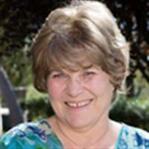 The month of Tishrei, beginning with Rosh Hashanah, presents a special challenge: so many prayers, so much repetition. By Yom Kippur we are ‘prayed out,’ and the Sukkot is still to come! But this is only a special case of the eternal problem of Jewish prayer: our liturgical life, our ceremonial life – in short, our common spiritual life – is grounded in the Siddur and uses the same prayers, day in and day out, Shabbat after Shabbat. Even when we (or our denominations) make changes, it does not take long for those prayers become the new normal. At some point, we must shift our perspective, or our prayers die, that is, they have no more life for us. We say we are bored when we pray alone, and synagogue services become mere social gatherings instead of an inward journey we take together. We have, it seems to me, only two choices: we detach from the prayers at least for a period of time, or we choose to inhabit them more deeply. I have done both, and sometimes, I admit, I have been relieved at the separation—but not for long. I love the siddur and I miss the prayers. Greater rewards have come from the other choice. A poet friend used to say, when his poetry readings didn’t get the warm reception he wanted, “When I’m not reaching people, I just have to go deeper.” So with us and prayer. I learned much from a particular teacher, Rabbi Shlomo Holland, who used to speak of the “worlds”of prayer. He would speak of the “world of the Shema,” the “world of Hallel,”and the like. At first I thought this was just colorful language, on the verge of being enticingly kabbalistic, but then I began to understand. It was at once more mundane and more wondrous than the systems of kabbalah. Every prayer is an entry point into a world of feeling, of consciousness, that one can inhabit, just like the world that you and your family and friends create in your home, or the “workaday world” as we call it. Just as those worlds are designed and populated, then energized by experience, so are our prayers. The designers were the poets and Sages of ancient times, and they populated the prayers with carefully chosen words and phrases. The Jewish people inhabit them. But, just as, when you first visit someone’s home, it can take a while to appreciate its unique atmosphere, so we must spend time with any prayer to connect deeply to the world it portrays. We can best see this by example. * * * Ahavah Rabbah, we say as we approach the central affirmation of our Jewishness, namely the Shema. This is the second and shorter of two blessings before the Shema. Please familiarize yourself again by reading this commonly used recent translation (Koren-Sacks):
A prayer of thanks for G*d’s love -- it seems straightforward. As often, however, a close look at the translation opens up more dimensions. Ahavah Rabbah does not mean “with great love,” which would be b’ahavah rabbah, but simply, Great Love. Literally, “You loved us Great Love.” As a portal, it is like a sign above the door of a storefront saying: Abundant Love – enter here! What can happen when we walk into the world of Divine love? Another phrase meets us: Chemlah gedolah, which Rabbi Sacks translates beautifully as “surpassing compassion.” The root ch.m.l is less often used than chesed (kindness) and rachamim (mercy) but it appears in the Yom Kippur liturgy, “Have compassion on Your handiwork…” It also appears in the prayer said on waking in the morning, “Modeh ani…I thank You, living and eternal King, Who has returned my soul to me with compassion [chemlah]….” The context in both cases stresses the chasm bridged between King and human, Creator and handiwork, through compassion. When the Sages put it in our daily prayers, they added a dimension to the idea of divine love. I think the two phrases should be read in parallel:
Moreover, we soon see that the hint to the High Holy Day liturgy was not a chance occurrence. It immediately echoes again:
During the Days of Awe, the Avinu Malkenu helps us beg for forgiveness, clearing the slate from the past, and preparing a good year. Here we ask for something different: a gift that was given “to our ancestors who trusted in you,” namely, “the laws of life.” We ask that G*d’s loving compassion be manifest in guidance, teaching us the way to live – divine Father as loving Teacher. Practice this: Close your eyes, go into your body now and feel divine love: a flowing from above, showering you with love, compassion, and trust. Your heart responds, and now you want to ask—what to ask?—only to hear words of goodness and life that will guide you today. Then the prayer deepens—here with a more literal translation than above:
Our hearts leap up; we beg even more strongly for compassion. We want to be transformed. And how? We ask that G*d not only give us the words of guidance, but also infuse our hearts with the desire to listen and learn and then act on all those laws of life: “To hear, to learn, to teach, to be watchful and to act -- to fulfill all the words of the learning of Torah in love (b’ahavah).” The language of the prayers becomes more physical, asking us again to feel this in our bodies: “Enlighten our eyes in Your Torah”—imagine the brightness filling your vision. “Let our hearts cling to Your commandments”—imagine your heart expanding to embrace the words of life. “Unite our hearts”—all of us now, all the people in the room where you are praying, or all those that appear in your mind’s eye—feel our hearts pounding and breathing together. From here the prayer moves us swiftly, and somewhat unexpectedly, into a yet more expanded experience of this world:
With these words, we are suddenly lifted into another dimension, that of redemption. Love and G*d’s gracious teachings, we now realize, can bring us to holiness, so that we rise above all possible earthly “shame.” Joy and gladness emerge from love and devekut (“clinging”), as a collective experience. The prayer continues by affirming the physical redemption as well, bringing Jews back home in peace to the land of Israel. At this point, if we are wearing a tallit, we gather the four tzitziot into the left hand, representing the four corners of the earth. Again, our tradition creates a bodily symbol of the reality of which we pray. Now the prayer closes, linking redemption and love:
From here, we proceed with exactly what the prayer has told us: affirming G*d’s Oneness through reciting the Shema. As this prayer ends with the word “love,” the Shema, after its powerful affirmation, begins with the word V’ahavta, “You shall love.” The circle is complete. * * * Certainly, the themes of the Ahavah Rabbah are well known to anyone familiar with the morning liturgy: God’s love for us, and our desire to respond in kind. Once we become familiar with it, the rhythms of the Hebrew carry us through the prayer. Even so, it is a different matter to inhabit the prayer, feeling love and yearning. Leaping from there into the joy of redemption is yet another step. What is perhaps most surprising is that the words themselves often allude to our potential for a bodily experience—words like enlighten, cling, unify. Prayers, I believe, cannot be read like the morning newspaper. They have to be worked through, with mind and heart and body. Try it. Once you have worked in this way, may you find, as I did, that the experience will resonate on other days, on the many occasions you say this prayer. Inhabiting the prayer with your own body, even in an imaginal way, leaves an impression, what the mystics call a reshima, like the impress of a seal in wax. You have been shaped, ever so subtly, by the holy words, and your body is enlivened by them—and like wax, softened perhaps, to be more receptive to words of goodness and holiness in the future.
Every prayer is a portal, an entry to a unique world of its own. May your journey into this multitude of worlds be blessed. © Copyright by Rabbi Mike Comins. You are welcome to reprint this article in your local newspaper, email list, Temple Bulletin or other communication if the following is appended: "This article is provided by the Making Prayer Real eJournal at RabbiMikeComins.com, where you will find outstanding resources on Jewish prayer." Dr. Tamar Frankiel, Ph.D., was appointed President for Academy of Jewish Religion, California in January 2013. She previously served as Provost and Professor of Comparative Religion. Dr. Frankiel received her PhD in History of Religions from the University of Chicago. She has taught at Claremont School of Theology, Stanford and Princeton Universities, and UC Berkeley and Riverside. She is the author of four books on Jewish mysticism and spiritual practice, including The Gift of Kabbalah and Minding the Temple of the Soul, co-authored with Judy Greenfeld (both published by Jewish Lights), and one on Jewish women’s issues, The Voice of Sarah: Feminine Spirituality and Traditional Judaism. She has also authored two books and numerous scholarly articles on religion in America, as well as a widely used textbook on Christianity. The Spiritual Dynamics of Prayerby Rabbi Mike Comins 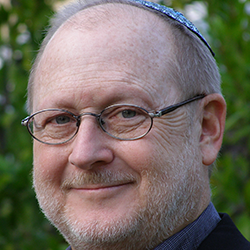 Prayer works quite differently for different people. Some pray to talk to God, others to listen for God. Others pray despite God. Some turn outward, others inward. Some like singing, others silence. Regular pray-ers learn what works for them. One person may spend some time in silence before opening the prayer book, another may stretch their muscles in a Yoga pose; a third might read a Torah commentary or a book on spirituality. Some people concentrate on the meanings of the Hebrew words; others may ignore the content and let the sounds, cadences and melodies of the prayers carry them forward. Some people pray every word of the liturgy; others might focus on a single line that jumps out at them; others close the prayer book and address God directly in their own words. Some do some of the above; others do most of the above. In my interviews for Making Prayer Real, I discovered that experienced pray-ers love the variety of prayer experience. They learn which techniques work best for them at different times. What should one do when one arrives at synagogue stressed? Which techniques work best when one needs to engage in introspection and do teshuvah? Which prayers command attention when one is outraged by injustice and suffering in the world? And when one takes the time to listen before speaking (or while speaking, or more likely, while singing or chanting a prayer) in order to discern the stirrings of the heart and which modality of prayer will best serve, another dynamic kicks in. The element of surprise! Often we hear the complaint: prayer is boring. We repeat the same words over and over. It is boring, if the words have no interaction with our hearts. But if we learn the art of connecting our yearning, aspirations, pain, gratitude, regrets and self-reflections to words of sprit—our own words or the words of the liturgy—we discover that repetition often helps rather than hinders. Generally speaking, the problem is not in the relevance of this or that part of the liturgy. Rather, most contemporary Jews lack the theory and the techniques for developing an inner life. That’s a topic for another article. But once a person learns the skills of a fruitful inner dialogue, the liturgy is like the score for the musician or the script for the actor, and personal prayer is like a paintbrush for the painter or a pen for the writer. Prayer is the heart’s enabler. In liturgical prayer, each reading is a performance, and each performance is an adventure. The score or the script does not change. But what the artist brings to the rehearsal is different every time. Thus, the performance is different every time. And often unexpected and surprising. But we are unaware, if we do not take the time and develop the skill to notice the changes within ourselves. Such discernment is straightforward mindfulness—paying attention to what is really happening in our hearts, rather than thinking of the next activity, or praying with a pre-conceived notion of what should or ought to be happening. When we discern the nuances in ourselves, we discern the nuances of prayer. Seeking to articulate and understand its own yearning, the heart speaks words to God (or divinity or the universe) by saying its own arrangement of the inherited, spiritual vocabulary or by reciting the words of the liturgy. Either way, when prayer is true, the words mirror our inner being; our inner being mirrors prayer. In this dialogue with the heart, prayer gives spirit voice; we discover ourselves through speaking to the Holy One. And sometimes—startled, humbled and awestruck—we realize that the Holy One has discovered us. © Copyright by Rabbi Mike Comins. You are welcome to reprint this article in your local newspaper, email list, Temple Bulletin or other communication if the following is appended: "This article is provided by the Making Prayer Real eJournal at RabbiMikeComins.com, where you will find outstanding resources on Jewish prayer." The Spiritual Dynamics of PrayerEditor's Introduction: As leader of the Prayer Project of the Institute for Jewish Spirituality, Rabbi Flam asked her working group the below questions on their practice of prayer. What follows is her own response. You, too, might ask yourselves these questions. You might present them to your study partner or spirituality group. We have opened up a discussion thread at the end of the article. If you would like to share your response to these questions, we invite your participation in the discussion. This article was originally written for rabbis. It contains untranslated Hebrew phrases and words. In order to keep the flow of the text, we have added translations at the end of the article. The Questions In your own prayer practice (or any section thereof), please explain what it is you are trying to do. (I would actually like to keep the question that broad, but if it is helpful, you might reflect on other angles, such as: What are you trying to cultivate within your own mind, heart and/or life through your prayer? What is it you hope will happen through your prayer?). Second, how is it that you go about trying to accomplish what you are trying to do? (Again, if it is helpful: What are your strategies for accomplishing what you are trying to do? What is important to have in place in order for your prayer to accomplish its intent?) Bare Prayer |
Welcome to the Making Prayer Real eJournal! Edited by Rabbi Mike Comins and sponsored
by the Making Prayer Real Curriculum, the eJournal offers wisdom, tools, and resources on the art of Jewish prayer. Explore the eJournal by clicking on the topics below. Please share these resources with your friends!
Categories
All
|
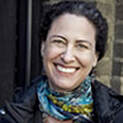
 RSS Feed
RSS Feed